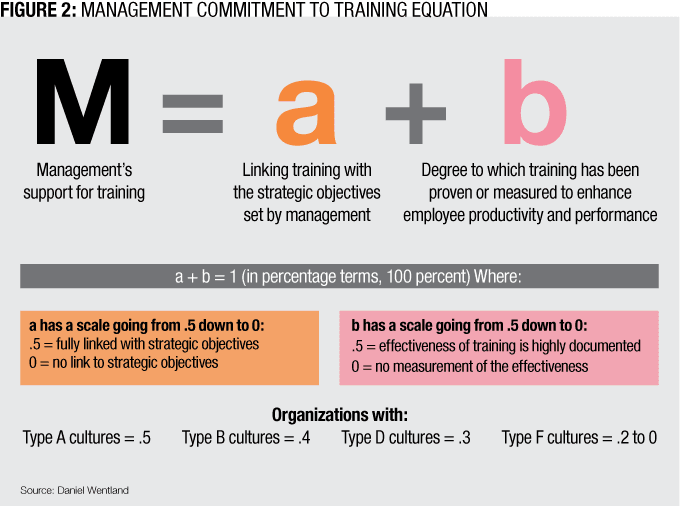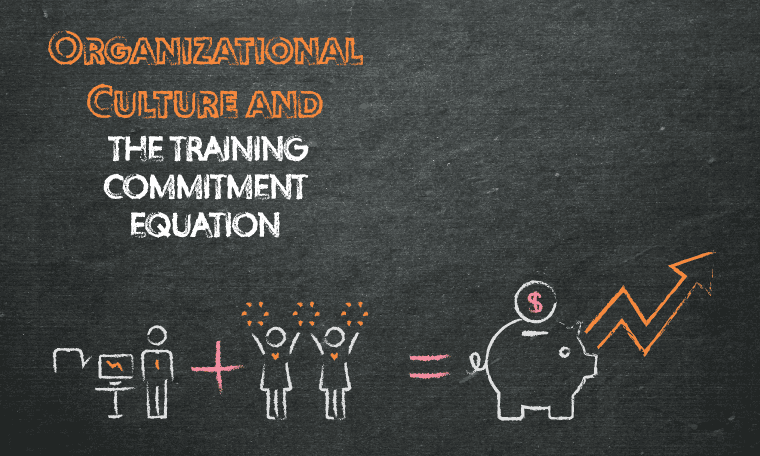Many executives claim to put their employees first and foster an organizational culture in which employees can flourish. Unfortunately, most employees indicate their organization is simply OK, summing it up with: “There are worse places to work.”
People respond to what is around them. The vital organizational task is to create a culture where employees can thrive, are prepared to effectively serve customers and function in an efficient manner to achieve organizational success.
The task of gaining an insight into organizational dynamics and the realization that organizational culture can positively or negatively impact organizational performance is not new. It can be traced back to the concept of institutionalization whereby an organization takes on a life of its own well beyond the original vision of the founders. While the concept of culture is not new, there are an evolving set of tools and frameworks for assessing culture.
To assess the culture of an organization and its impact upon the financial performance of that organization, there are three workplace parameters that form the boundaries for four specific organizational cultures. These four organizational cultures in turn set the stage for the development of the Financial Model of Organizational Culture, or FMOC.
This model provides a vision for predicting the financial performance of an organization based on its culture. The objective is to develop a course of action to improve the organization’s culture and, more importantly, the financial performance of the organization.
Ultimately, it’s the quality of the employees within an organization that will determine an organization’s fate. Employees have always made the difference between a truly successful organization and a mediocre entity. The primary driving force that brings people into a concert hall is to hear enchanting music performed by trained musicians whose skills and talents are on display. Highly qualified employees produce quality outputs and provide quality service that satisfies consumer needs. Highly skilled employees, managers and support staff are the lifeline of an organization.
Organizations with cultures that focus on their people and that invest in their future will in the long run achieve a higher level of financial success than organizational cultures that view employees as mere costs to be reduced in times of trouble.
 The Path Toward the FMOC
The Path Toward the FMOC
An organization has three common elements: people, a goal or purpose, and a structure (meaning any phenomena created by the members of an organization) that defines and limits the behavior of members of an organization.
Without people, a goal or purpose and some form of structure, there is no organization. Of the three elements, people constitute the most important factor because without them the other two elements cease to exist.
When the three elements are brought together, an organization is formed and a culture develops that influences every aspect of the production process. The culture is defined by three workplace parameters:
- The attitudes and practices of management.
These can be assessed by the overall degree of trust between management and nonmanagerial personnel. An adversarial relationship between management and nonmanagerial personnel tends to develop when managers focus too much on operational and financial issues while ignoring or paying limited attention to the well-being of the employees.
Dissatisfied employees purposely engage in many behaviors that reduce workplace performance and limit productivity. A fertile breeding ground for advancing workplace performance and productivity can only be laid when individuals are respected for who they are and placed in positions that complement their strengths. And make no mistake about it: Increasing productivity is the catalyst behind the socioeconomic achievements of a society.
From a strict organizational perspective, the right managerial attitude can breathe life into a management philosophy or culture that will boost the chances of organizational success by establishing a workplace environment in which individuals will want to consistently perform at their best.
- The organizational environment among employees.
The environment can be assessed by the extent of cooperation and internal politics and favoritism within the organization. A highly politicized work environment will eat away at collegiality and undermine productivity. If left unchecked, it will eventually squelch innovation, cripple productivity and destroy the organization. The long-term sustainability of any organization will depend on whether it controls internal politics and favoritism. Any organization that fails to base performance and compensation on merit will drift into mediocrity and possibly face extinction in a competitive environment. Merit must be rewarded. Favoritism must be discouraged.
- The tasks being performed within an organization.
This factor can be assessed by asking whether a task has meaning for that individual. In many organizations, most employees do not understand how their work contributes to the organization’s goals and vision. On the other hand, organizations that create an environment where individuals feel that their work is important and that their organization is providing a positive benefit to the community set the stage for innovation and creativity. When innovation and creativity flourish so does work performance and productivity. As managers and employees work together with a shared vision focused upon improving organizational performance so will the financial situation of the organization begin to thrive. Optimizing organizational performance is the yard stick by which to evaluate the quality of an organization.
Using the three workplace parameters, we can identify four distinct organizational cultures:
Culture A:
- There is a relationship of trust between management and nonmanagerial personnel.
- Cooperation between individuals and departments and units is encouraged; politicking and favoritism are discouraged.
- Individuals feel their actions have a meaningful impact on the organization and that their organization stands for excellence and its policies are based upon ethical behavior and practices.
Culture B:
- Two of the three elements of culture “A” are present. For example, there is trust and cooperation but tasks might not have meaning for the individual.
Culture D:
- One of the three elements of culture “A” is present. For example, tasks might have meaning for the individual but there is no trust or cooperation present within the culture of the organization.
Culture F:
- None of the three elements of organizational culture “A” are present.
From these four measurable and distinct organizational cultures we can present the FMOC model (Figure 1).
According to the FMOC model, organizations that have a type “A” culture are predicted to financially out-perform other organizations with similar resources. Financial measurements that can be used to test this assumption include earnings per share, sales volume, return on equity, stock price, operational costs and net profit. As for policy recommendations, the FMOC model suggests that managerial personnel should continue with their current practices.
Organizations that have a type “B” culture are predicted to be financially competitive with other organizations with similar resources. The policy recommendation for these organizations is to incorporate within their organizational culture the missing organizational culture “A” element and thus form a type “A” culture.
Organizations that have a type “D” culture are predicted to perform below their competitors. The policy recommendation for these organizations is to develop a type “B” or “A” organizational culture.
Organizations that have a type “F” culture are predicted to perform significantly below their competitors. The policy recommendation for these organizations is to incorporate the missing elements of organizational cultures “D,” “B” and “A.”
FMOC links the culture of an organization to the financial status of that organization and provides management with a methodology to improve the financial status by adopting a managerial philosophy that fosters a type “A” or “B” culture.

The People Factor
At the core of the FMOC lies a common thread that binds each of the three critical workplace parameters together and ultimately determines whether an organization will possess an “A,” “B,” “D” or “F” culture. What is it?
The people element is the most important factor in any organization. The quality and attitudes of the people within an organization set the stage for its accomplishments. An organization that invests in its employees will achieve a higher level of financial success. This investment in human capital must begin with the hiring process and continue throughout the employee’s tenure with the organization.
Put simply, it’s the employees that make the difference between organizational success or failure and what influences the quality of the employees is the training provided to them.
Management’s Commitment to Training
From a practical perspective, management’s commitment to training hinges on whether leaders believe that the training will produce or improve products and services. Training significantly adds to the output value of a product or service when it’s directly linked with the strategic objectives set by management. If training is linked to organizational strategy, it encourages managers to support the training because they know it will have a major impact on organizational competitiveness and success.
Another variable that influences management’s support for training is the degree to which the training has been proven or measured to enhance employee productivity and performance. Using these variables an equation can be utilized to capture management’s commitment to training (Figure 2).
In sum, to understand organizational performance one must understand the people factor within an organization. The quality of an organization’s people at all levels determines organizational success or failure because an organization is nothing more than the systems that the members of the organization created. The superiority of any creation ultimately depends on the abilities of its creators.
An organization can only accomplish great feats in a work environment where greatness can thrive. At the core of organizational success is the quality of the members of the organization.
Daniel Wentland is the author of five books on education and employee development. He is a visiting professor in the College of Education and Human Development at Jackson State University in Jackson, Mississippi. Comment below or email editor@CLOmedia.com














